A three-day workshop on Elephanta will discuss the archaeological remains on the island and relook at its history
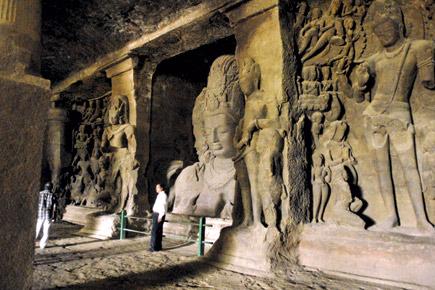
Visitors by the statue of the Hindu deity Sadashiva or eternal Shiva at Elephanta caves
![]() A ferry ride away from the city at a distance of about 11 km from Apollo Bunder lies the Elephanta Island.
A ferry ride away from the city at a distance of about 11 km from Apollo Bunder lies the Elephanta Island.

Visitors by the statue of the Hindu deity Sadashiva or eternal Shiva at Elephanta caves. Pic/Pradeep Dhivar
ADVERTISEMENT
While it remains untouched by electricity, it boasts of a UNESCO World Heritage Site tag for the man-made caves that showcase a stunning display of Indian Hindu architecture and sculpture techniques that date back to 3rd century CE.
But there is far more to see on the island that has been inhabited since almost 2,000 years. A workshop has been organised by India Study Centre or INSTUCEN that regularly conducts expert workshops and talks on Indian history and archaeology, next weekend.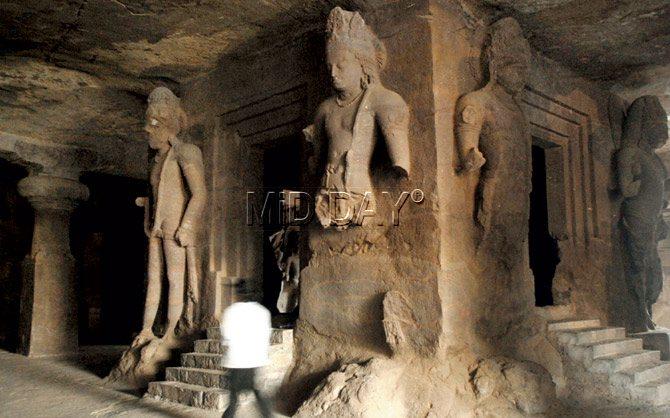
Stone sentinels at the entrance. Pic/Shadab Khan
"Just looking at the caves of Elephanta and leaving is equivalent to reading three-four pages of a book and considering it read. At this workshop, we will look at different spots of the island that point at the diverse and rich history of Elephanta," says Dr Kurush Dalal, who along with Dr Suraj Pandit and professor AP Jamkhedkar will be conducting an extensive workshop that will link the various eras that have left a stamp on the island.
The organisers will guide participants to various archaeological sites and the caves. Day one will cover the sites around the hill; day two will include a visit to the stupa hill caves and day three will explore caves numbered 2, 3 and 4. The workshop is open to anyone from the academic community or history enthusiasts.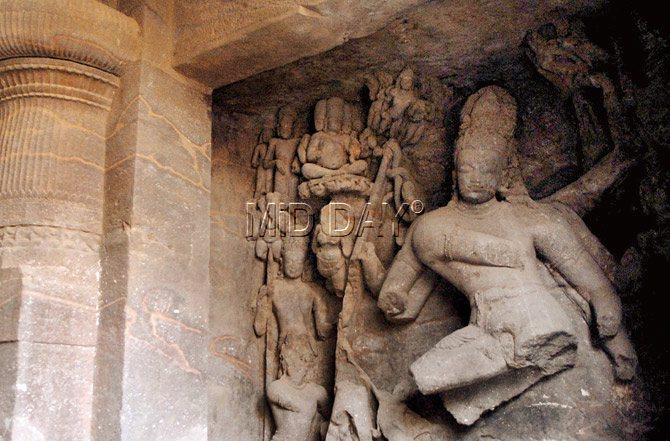
Shiva performing the dance of destruction or the Tandava. Pic/Shadab Khan
What's in a name?
Popularly known as Elephanta, it was given its name by the Portuguese rulers of the city. The name comes from a huge statue of an elephant made of basalt, about 4.5 m long and 2.4 m high that used to stand at the old landing place of the island.
By the 19th century, the wear and tear of years had taken its toll on the sculpture. In 1864, the British (who were ruling this part of the subcontinent) attempted to carry the elephant back to England. Such was its weight that the crane broke, and the elephant was shattered.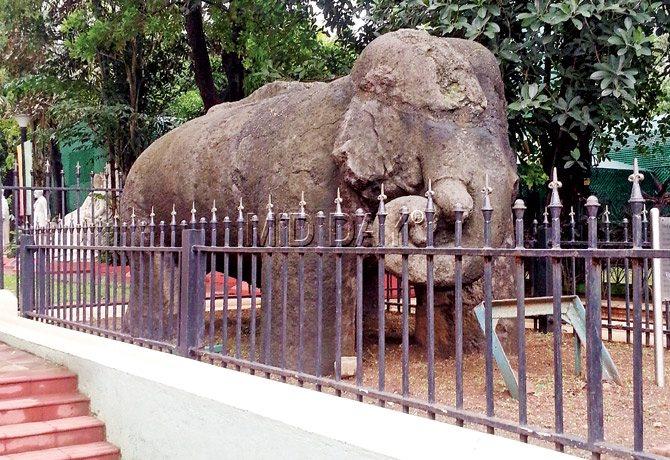
The elephant sculpture after which Elephanta island is named now stands at Dr Bhau Daji Lad Mumbai City Museum in Byculla. Pic/Dhara Vora
The fragments were brought to Veermata Jijabai Bhosale Udyan (then Victoria Garden) and put together by Sir George Birdwood, then curator of Victoria & Albert (Dr Bhau Daji Lad Mumbai City) Museum. The elephant still stands in the museum complex. For locals, the island has always been Gharapuri or Puri, the capital of Mauryas of the Konkan.
Land of many kings
Like Mumbai, the island has seen the rule of several kingdoms, both local and foreign.
The columns in the cave are of different heights as the floor and the ceiling are not perfectly horizontal. Pic/Pradeep Dhivar
"The island has been under continuous habitation for almost 1,500 years. The earliest dates of habitation go back to at least 1st century CE. "Cannons of the British still stand on top of the island. Amphorae (two handled pots) have been found at the beaches that point to Indo-Roman relation," points out Dalal. Numerous coins of the Kalachuris have also been reported from the island.
Carved in stone
Dalal tells us that in addition to the man-made caves that have been carved by the Pashupata sect, there are Buddhist stupas at the site as well, which will be visited during the workshop.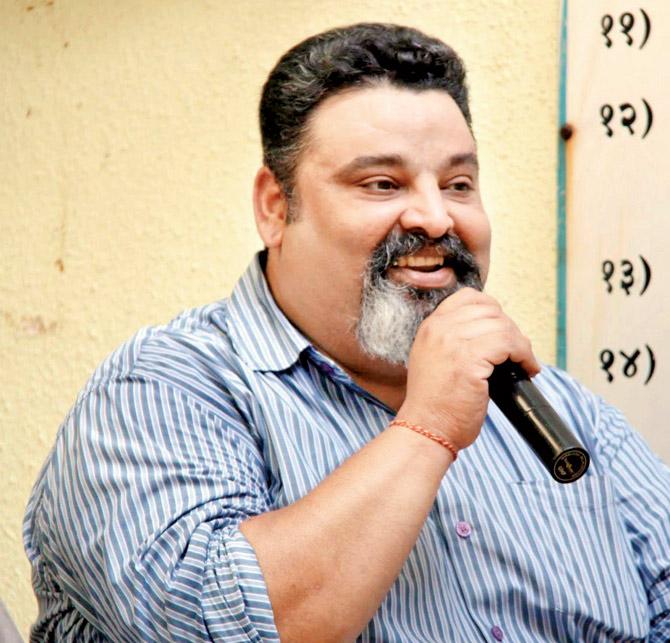
Kurush Dalal
The most popularly seen areas of the caves remain the square shrine occupying the Shiva linga and the three-headed Sadashiva statue. The central head of the statue shows Shiva in a calm and reflective mood, with the aggressive male side of the head on the left and the female head on the right. Various other forms of Shiva are seen in the form of large sculptures in the columned caves.
These include the androgynous Ardhanareshwara, Gangadhara or Shiva-bearing river Ganga, Shiva doing the Tandava or the dance of destruction (with the face being calm) and Andhakasuravadha or Shiva killing Andhaka, an asura who tried to abduct Parvati. The art, on the historical grounds, can be dated to the Traikutakas dynasty.
Considered to be one of the greatest examples stone sculptures, the workshop aims to delve into the details of the site that gives a glimpse of the political history of the country, trade relations and the art history perspective.
From January 23 to 25
cost Rs 6,000, includes lunch and tea onsite, daily travel to and from the Gateway of India and tickets to the monument
Log on to www.facebook.com/events/1646525962252811
 Subscribe today by clicking the link and stay updated with the latest news!" Click here!
Subscribe today by clicking the link and stay updated with the latest news!" Click here!







